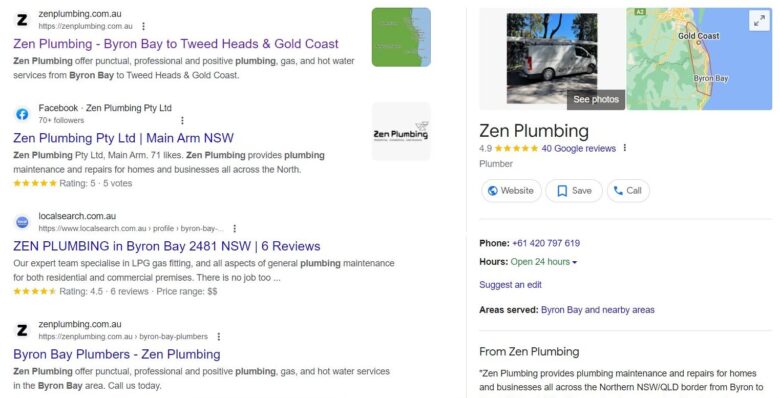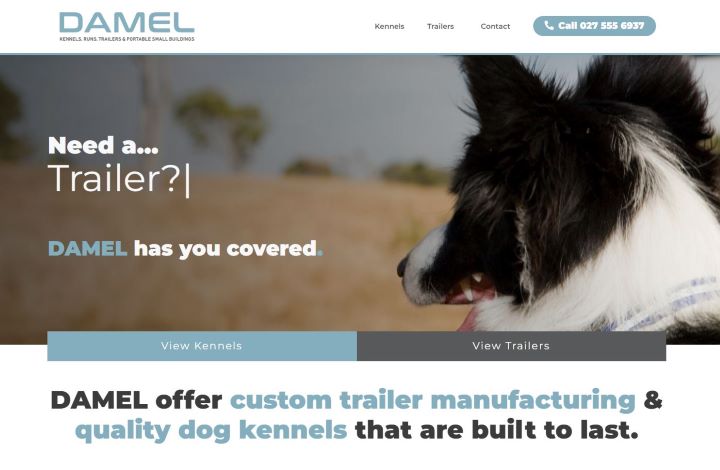When it comes to designing simple webpages for a small business, what is the best structure to use?
By simple, I mean a small business serving one main location. Ranking multiple locations adds a little bit more complexity.
The best way to structure your website will vary depending on your business, your products and services, your target audience, and your overall SEO goals. However, there are some basic principles that can help you create a sound structure for your website that will support your SEO efforts.
Your website’s structure should be designed to help both search engines and visitors find the information they need. A well-structured website will make it easy for search engines to index your pages and for visitors to navigate your site.
Introduce Your Business on the Homepage
One of the principles of SEO is clarity.
You need to ensure that your page titles, meta description and headings all tell Google very clearly who your are, what you do, and where you do it.

Zen Plumbing make it clear they are plumbers operating from Byron Bay to Gold Coast
Use descriptive names and URLs for your pages
Use descriptive names for your pages that accurately reflect their content. This will help visitors understand what they will find on each page and make it easier for search engines to index your pages.
A good guideline for the homepage title is to use the business name + your main business activity + the location or area you service (Who – what – where). For example, in Zen Plumbing’s case, the business activity is included in the business name.
The same goes for your URLs, especially on the subpages. Zen has many subpages for its services. For example, https://www.zenplumbing.com.au/solar-hot-water/ – Zen’s solar hot water installation and maintenance service.
Use keyword-rich titles and descriptions
Use keyword-rich titles and descriptions for your pages to help improve your website’s visibility in search results. However, use keywords naturally – don’t force them in unnatural ways, or overuse them.
Introduce your business
In keeping with the principle of clarity, introduce all of the main characteristics of your business on your home page.

In this case, Zen Plumbing have used an H2 for their business name, and the H1 heading below it to reveal the business name, service area, and main business activities very clearly. Headings send strong signals to search engines about what is important on your site.
Introduce Your Products And Services on the Homepage
DAMEL’s homepage clearly introduces their main products and services: “DAMEL offer custom trailer manufacturing & quality dog kennels that are built to last.” Further down the page they have a section for custom-manufactured kennels and then a section for custom-m,anufactured trailers.
At this point, people landing on their page will already have a clear idea of whether DAMEL is the right page for them. If ther are wanting to hire a furniture moving trailer, they will already be notinicing that there is nothing here about trailer hire.
But if they want a custom manufactured tandem trailer, then they will quickly see that they have found a business that does that.

DAMEL clearly introduce their main products and services
Likewise, Paramount Plumbing list all of their plumbing and gas fitting services one row at a time.
Create Subpages for Specific Products And Services
When it comes to adding subpages, it is essential to use a simple but clear hierarchy.
DAMEL and Paramount Plumbing have different structures, but they are both logical, clear and simple.

Because DAMEL have two main product ranges, they have a subpage for each of these. Then they create further subpages for specific products within each range.
Paramount do not need three tiers in their hierarchy so they simply create subpages for their plumbing and gas-fitting services.
Conclusion
Using a simple structure will create clarity for both search engines and users. If in doubt, stick to the KISS principle – keep it seriously simple!
